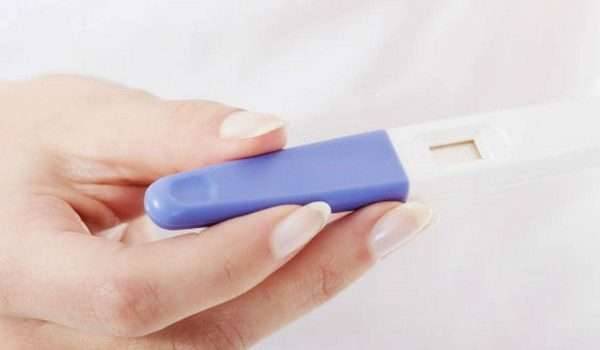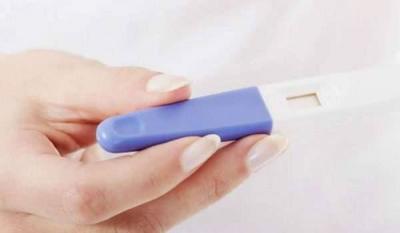Infertility means you have been unable to conceive after a year of trying. However, if the woman is over 35 years old, infertility is defined as the failure to conceive after 6 months of attempting. The term primary infertility refers to a woman who has never been able to conceive at all, while secondary infertility refers to a woman who has successfully carried a pregnancy at least once in the past. According to the department responsible for women's health, about one-third of infertility cases can be attributed to female infertility, while male issues account for another third. The remaining third may be due to a combination of male and female infertility, or there may be no known cause.
## Signs of Female Infertility
The length of the menstrual cycle (35 days or more), or its shortness (less than 21 days), or irregularity or absence of menstruation can be signs of ovulatory failure, which may be associated with infertility in women, and there may be no other visible signs or symptoms.
## Causes of Female Infertility
1. **Ovulatory Disorders**
Approximately 25 percent of infertility cases are attributed to ovulatory disorders, which means irregular ovulation or no ovulation at all. This can occur due to problems with hormone regulation by the hypothalamus or pituitary gland, or due to issues with the ovaries themselves. Examples of ovulatory disorders include:
- **Polycystic Ovary Syndrome (PCOS)**
In PCOS, complex changes occur in the hypothalamus, pituitary gland, and ovaries, leading to a hormone imbalance that affects ovulation. PCOS is associated with insulin resistance, obesity, excessive hair growth on the face or body, and acne. This syndrome is the most common cause of infertility in women.
- **Hypothalamic Dysfunction**
The two hormones that stimulate ovulation each month—follicle-stimulating hormone (FSH) and luteinizing hormone (LH)—are produced by the pituitary gland in a specific pattern during the menstrual cycle. Excessive physical or psychological stress, significant weight gain or loss, or the substantial increase or decrease in body weight can disrupt this pattern and affect ovulation. Irregular or absent menstrual cycles are the main sign of this problem.
- **Premature Ovarian Failure**
This disorder usually occurs due to an autoimmune response where the body mistakenly attacks ovarian tissues, or due to an early loss of eggs from the ovaries due to genetic issues or environmental factors like chemotherapy. This results in the loss of the ability to produce eggs, as well as decreased estrogen production in women under age 40.
- **Hyperprolactinemia**
In less common cases, the pituitary gland can produce excessive prolactin (hyperprolactinemia), which reduces estrogen production and may cause infertility, often related to a pituitary problem, but it can also be associated with medications taken for other conditions.
2. **Damage to the Fallopian Tubes**
Damage to or blockage of the fallopian tubes prevents sperm from reaching the egg or inhibits the passage of the fertilized egg to the uterus. Causes of fallopian tube damage or blockage can include:
- Pelvic inflammatory disease, an infection affecting the uterus and fallopian tubes due to chlamydia, gonorrhea, or other sexually transmitted infections.
- Previous abdominal or pelvic surgery, including ectopic pregnancy surgery, where the fertilized egg implants and begins to grow in the fallopian tube instead of the uterus.
- Pelvic tuberculosis, a leading cause of infertility worldwide, although less common in the United States.
3. **Endometriosis**
Endometriosis occurs when tissues that typically grow inside the uterus implant and grow in other locations. This excess tissue growth—and its surgical removal—can cause scarring that may block the tubes and prevent the egg and sperm from meeting. This condition can also affect the uterine lining, hindering the implantation of the fertilized egg and may indirectly impact fertility by damaging sperm or eggs.
4. **Uterine or Cervical Causes**
Various uterine or cervical issues can impact fertility by hindering the implantation of eggs or increasing the risk of miscarriage, including:
- The presence of polyps or benign tumors (fibroids or myomas) in the uterus, which can impair fertility by blocking the fallopian tubes or obstructing egg implantation. However, many women with fibroids or polyps are able to conceive.
- Endometriosis or uterine inflammation may also impede egg implantation.
- Congenital uterine anomalies, such as abnormal uterine shape, can create difficulties concerning the ability to conceive or maintain a pregnancy.
- Cervical stenosis may occur due to a genetic defect or damage to the cervix.
- Sometimes, the cervix may not produce the optimal type of mucus to allow sperm to move through the cervix into the uterus.
5. **Unexplained Infertility**
In some cases, no cause for infertility can ever be identified, and it is likely that a combination of several minor factors in both partners underlies these unexplained fertility issues. Although it can be frustrating not to have a specific answer, this problem may resolve on its own over time.
## Who Are the Women Most at Risk of Experiencing Infertility?
- Aging, particularly after the age of 35 and 40.
- Smoking, as it increases the risk of miscarriage and ectopic pregnancy and is also believed to age the ovaries and deplete eggs early, reducing the ability to conceive. Therefore, quit smoking before starting fertility treatments.
- Obesity, which disrupts normal ovulation, with a healthy Body Mass Index (BMI) shown to improve ovulation rates and chances of conception.
- Sexually transmitted infections.
- Alcohol and illegal drug use.
## How Is the Cause of Female Infertility Determined?
If you have been unable to conceive within a reasonable time frame, seek help from your doctor for a further evaluation of infertility and treatment.
- Ovulation hormone tests in addition to thyroid and pituitary hormone assessments controlling reproduction.
- Hysterosalpingography using dye to check for obstructions or abnormalities in the uterus. In some women, the test can itself enhance fertility, possibly by clearing and opening the fallopian tubes.
- Ovarian reserve testing.
- Abdominal and pelvic ultrasound to see details inside the uterus that cannot be captured with normal ultrasound imaging.
- Depending on the symptoms you experience, your doctor may request a hysteroscopy or laparoscopy. Genetic tests assist in determining if there is a genetic defect causing infertility.
## Treatment for Female Infertility
The treatment of infertility depends on its cause, your age, how long you have been experiencing infertility, and your personal preferences. Since infertility is a complex disorder, its treatment involves significant financial, physical, psychological, and time commitments, and while some women may only need one or two treatment methods to regain their fertility, you may require several different types of treatment before successfully conceiving.
1. **Ovulation Induction Using Fertility Medications**
Fertility medications may include:
- **Clomiphene Citrate**
This oral medication (Clomid, Serophene) stimulates ovulation by prompting the pituitary gland to release more FSH and LH, which stimulate the growth of ovarian follicles containing eggs.
- **Gonadotropins**
Instead of prompting the pituitary gland to release more hormones, these injectable medications stimulate the ovaries directly and include drugs like human menopausal gonadotropin (hMG) (Repronex, Menopur) and follicle-stimulating hormone (FSH) (Gonal-F, Follistim AQ, Bravelle), all of which stimulate the production of multiple eggs. Another type of gonadotropin, human chorionic gonadotropin (Ovidrel, Pregnyl), is used to mature eggs and trigger their release during ovulation.
- **Metformin**
This medication (Glucophage, etc.) is used when insulin resistance is known or suspected to be the cause of infertility, which often occurs in women diagnosed with PCOS. Metformin helps improve insulin resistance, potentially increasing the likelihood of ovulation.
- **Letrozole**
This drug (Femara) belongs to a class of medications called aromatase inhibitors that work similarly to clomiphene and may stimulate ovulation, but its effect on early pregnancy stages is still unknown, so it is not used as frequently to induce ovulation as other medications.
- **Bromocriptine**
This medication (Parlodel, Cycloset) may be used when ovulation problems are due to increased prolactin production (hyperprolactinemia) by the pituitary gland.
## What Are the Risks of Using Fertility Medications?
Using fertility medications comes with certain risks, such as:
- **Multiple pregnancies**: The more embryos you carry, the higher the risk of premature labor, low birth weight, and subsequent developmental issues. Adjusting medications can sometimes reduce the risk of multiple pregnancies if several follicles grow.
- **Ovarian Hyperstimulation Syndrome (OHSS)**, in which the ovaries swell and become painful, usually lasting for about a week and can involve mild abdominal pain, bloating, nausea, vomiting, and diarrhea. However, if you become pregnant, symptoms may persist for several weeks, and in rare cases, a more severe form of OHSS can occur, leading to rapid weight gain, painful ovarian enlargement, fluid accumulation in the abdomen, and shortness of breath.
- **Long-term risk of ovarian tumors**: Some studies indicate that women who use fertility medications for 12 months or longer without success in conceiving may increase their risk of developing borderline ovarian tumors related to these medicines in later stages of life.
2. **Surgery**
- **Laparoscopic Surgery or Hysteroscopy**
To remove or correct issues that reduce pregnancy rates, this may include correcting uterine shape by removing some polyps from the uterine lining and certain types of fibroids that distort the uterine cavity or pelvis, which can improve your chances of conceiving.
- **Tubal Reversal Surgery**
To reconnect the tubes and restore fertility, your doctor can determine if you are a candidate for this surgery or if IVF is a better option for you.
- **Fallopian Tube Surgeries**
If your fallopian tubes are blocked or filled with fluid, laparoscopic surgery may be performed to remove adhesions, expand the tube, or create a new fimbrial opening. However, this surgery is rarely done as pregnancy rates are usually better with IVF. In cases of hydrosalpinx, removing the fallopian tubes (salpingectomy) or blocking them near the uterus may improve your chances of pregnancy through IVF.
3. **Assisted Reproductive Techniques**
Commonly used medical-assisted reproductive methods include:
- **Intrauterine Insemination (IUI)**
During IUI, millions of healthy sperm are placed inside the uterus as ovulation approaches.
- **Assisted Reproductive Technology (ART)**
These methods involve extracting mature eggs from the wife and fertilizing them with her husband’s sperm in the laboratory, then transferring the embryos to the uterus post-fertilization. IVF is considered the most effective ART technique, lasting several weeks and requiring frequent blood tests and daily hormone injections.
### Finally..
If you are thinking about conceiving soon or in the future, your chances of having natural fertility may improve if you:
- Maintain a healthy body weight, as both overweight and underweight women are at greater risk of ovulatory disorders. If you need to lose weight, engage in moderate exercise, as strenuous exercise exceeding seven hours a week has been linked to reduced ovulation.
- Avoid smoking and secondhand smoke while limiting caffeine intake, and refrain from alcohol and illegal drugs.
- Reduce stress, as some studies have shown that couples under psychological stress have poor fertility treatment outcomes, so try to find ways to cope with stress in your life before attempting to conceive.




